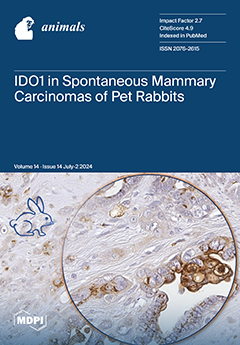The inevitable enteric gas emission from ruminants is considered a modern-day problem from an environmental perspective. Addressing this problem requires nutritional approaches such as the use of phytogenic additives in ruminant diets. In this regard, lupin seed (LS) can be a useful additive due to its phytochemical constituents. Therefore, this study investigated the effects of lupin (
Lupinus angustifolius) seed supplementation as a functional and sustainable feed additive in sheep diet (50:50 concentrate-to-forage ratio) on
in vitro gas production (GP; mL/g DM), methane (CH
4; mL/g DM) and carbon dioxide (CO
2; mL/g DM) emissions, fermentation parameters, and nutrient degradability (g/kg DM incubated). Gas production and CH
4 were measured per gram of incubated dry matter (DM), degradable DM (
dDM), degradable neutral detergent fiber (
dNDF), and degradable acid detergent fiber (
dADF). Lupin seeds were included at 0 (control), 0.5, 1.0, 1.5, and 2% of the diet. The seeds contained 3.27% essential oils (DM basis), with eucalyptol as the main phytochemical. The highest GP per gram of DM and
dDM was observed (
p < 0.01) with 2.0% LS supplementation level. While 1.0% LS had the highest GP per gram of
dNDF, 0.5% lupin diet had the highest GP per gram of
dADF. Asymptotic GP and CH
4 emissions linearly and quadratically increased (
p < 0.01) with increasing LS level, while lag time decreased. Despite increased CH
4 production, the proportion of CH
4 in total biogas was lower (
p = 0.008) for LS treatments than the control, with the 0.5% LS showing the lowest CH
4 proportion. Production of CO
2 increased with lupin seed treatments, with 0.5% LS producing the highest proportion (
p = 0.027). Degradability of DM, NDF, and ADF was greater (
p < 0.01) for the high LS supplementation level, while 0.5% supplementation level decreased ADF degradability. Total short-chain fatty acids, acetic acid, and propionic acid increased (
p < 0.05) with LS supplementation level, leading to a reduced acetate:propionate ratio. Rumen pH decreased (
p = 0.036) with LS supplementation, while ammonia-N decreased (
p = 0.045) and estimated metabolizable energy increased (
p < 0.001) linearly. Calculated microbial protein synthesis (
p = 0.005) and gas yield (
p = 0.047) increased with LS supplementation level. LS supplementation at 2.0% of diet (DM basis) increased GP and CH
4 emission (mL/g DM) and enhanced nutrient degradability, suggesting its potential use as a functional feed additive for ruminants when supplemented at a 2.0% level into diet.
Full article






